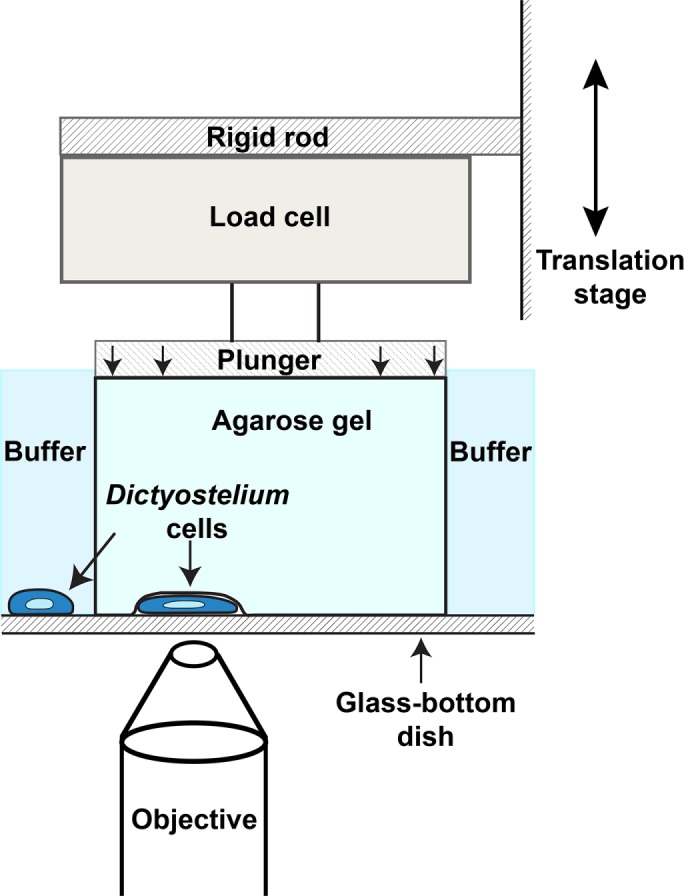
Citation
N. Srivastava, R.R. Kay and A. Kabla
Molecular Biology of the Cell 28(6):809-816 (2017)
Abstract
Abstract
The chemical, physical, and mechanical properties of the extracellular environment have a strong effect on cell migration. Aspects such as pore size or stiffness of the matrix influence the selection of the mechanism used by cells to propel themselves, including by pseudopods or blebbing. How a cell perceives its environment and how such a cue triggers a change in behavior are largely unknown, but mechanics is likely to be involved. Because mechanical conditions are often controlled by modifying the composition of the environment, separating chemical and physical contributions is difficult and requires multiple controls. Here we propose a simple method to impose a mechanical compression on individual cells without altering the composition of the matrix. Live imaging during compression provides accurate information about the cell’s morphology and migratory phenotype. Using Dictyostelium as a model, we observe that a compression of the order of 500 Pa flattens the cells under gel by up to 50%. This uniaxial compression directly triggers a transition in the mode of migration from primarily pseudopodial to bleb driven in <30 s. This novel device is therefore capable of influencing cell migration in real time and offers a convenient approach with which to systematically study mechanotransduction in confined environments.
Figure sample

Working principle of the cell squasher. A mechanical load is applied uniformly on a hydrogel while cells are migrating underneath the gel in a classical under-agarose assay. The plunger's vertical position is controlled by an automated translation stage. The pressure applied is monitored with a load cell feeding back to the stage control system to ensure an accurate and dynamic control of the loading conditions.

